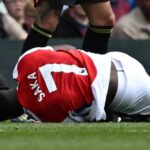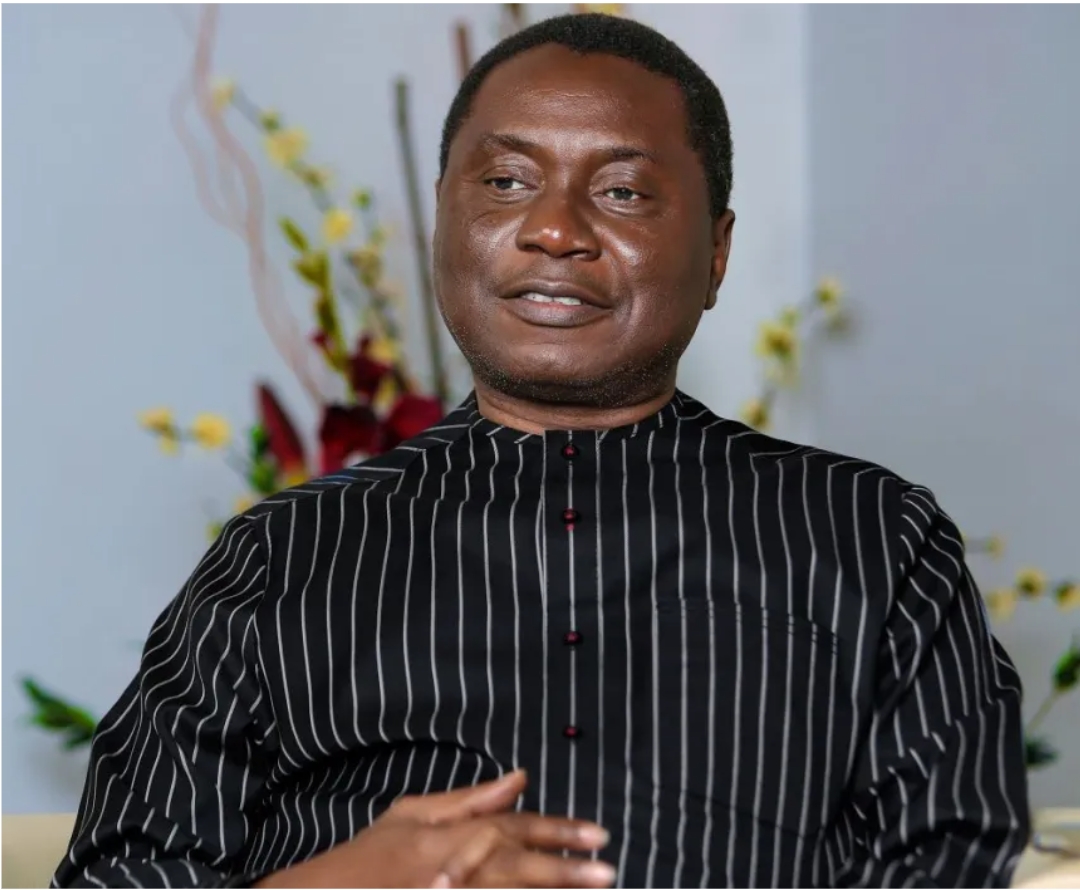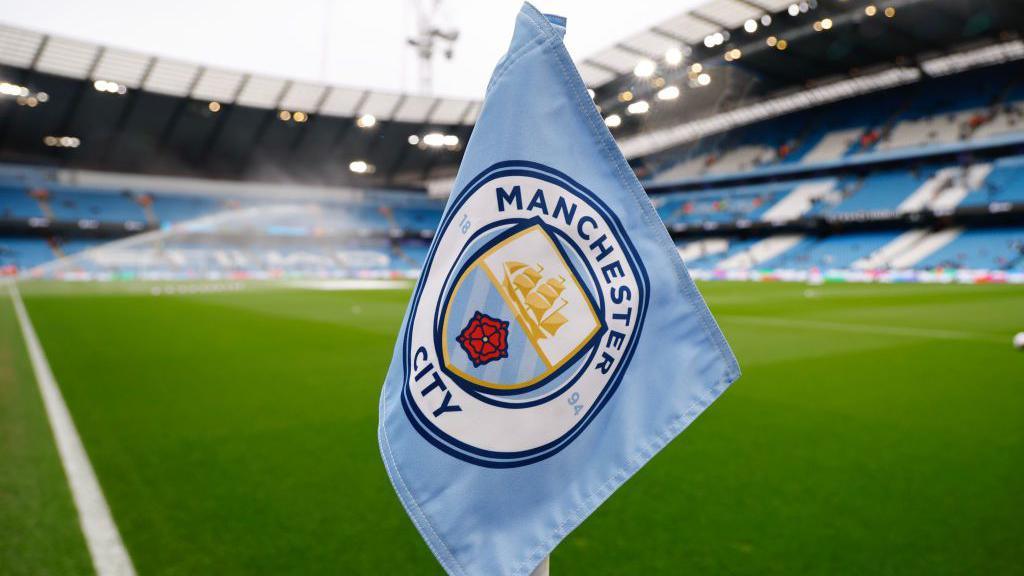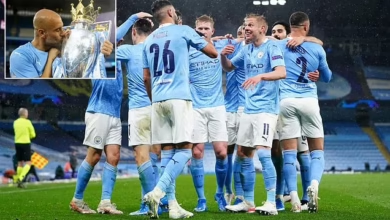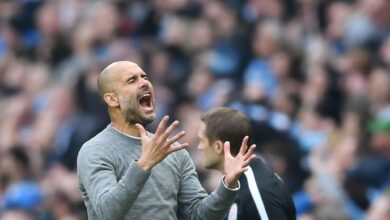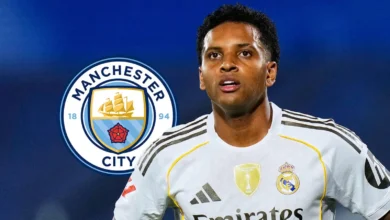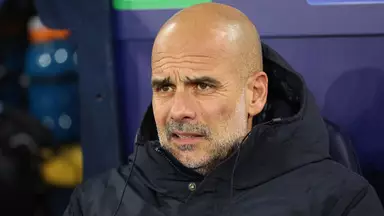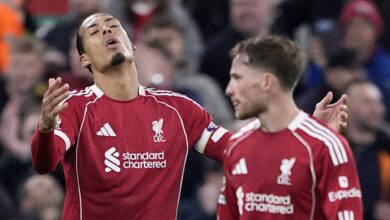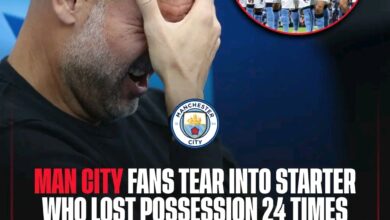Bukayo Saka Injury Update: Arsenal’s Star Winger Limps Off After North London Derby Defeat

The Emirates faithful held their collective breath on Thursday evening as Bukayo Saka, Arsenal’s talismanic winger and one of English football’s brightest stars, was forced to limp off the pitch following a concerning injury during Arsenal’s disappointing 1-0 pre-season defeat to Tottenham Hotspur in Hong Kong. The sight of the 22-year-old England international gingerly making his way off the field has sent ripples of anxiety through the Arsenal fanbase, particularly with the new Premier League season looming just over two weeks away.
The injury occurred during what was supposed to be a routine pre-season friendly at the Kai Tak Sports Park in Hong Kong, part of Arsenal’s Asian tour designed to build match fitness and team cohesion ahead of the 2025-26 campaign. Saka, who has become instrumental to Arsenal’s attacking play in recent seasons, was the victim of a challenge from Tottenham’s Mathys Tel during the second half of the encounter. The French forward’s tackle left Saka requiring immediate medical attention on the pitch, with Arsenal’s medical staff rushing to assess the extent of the damage.
The concerning nature of the challenge and Saka’s subsequent reaction immediately raised alarm bells among the traveling Arsenal supporters and watching millions around the world. Tel’s involvement in the incident added an extra layer of frustration for Arsenal fans, given the competitive nature that pre-season friendlies between North London rivals invariably take on, regardless of their supposed exhibition status.
Following treatment from the medical team, Saka attempted to continue playing but was clearly compromised by whatever injury he had sustained. His movement appeared restricted, and his usual explosive pace and directional changes seemed notably absent. After several minutes of trying to soldier on, the decision was made to substitute the winger in the 77th minute, with young Max Dowman coming on to replace him.
Perhaps most concerning for Arsenal supporters was what transpired after the final whistle. As Tottenham celebrated their victory and both sets of players made their way toward the tunnel, Saka was visibly limping alongside his teammates. The sight of one of Arsenal’s most important players struggling to walk normally sent immediate shockwaves through social media, with fans expressing their fears about the potential severity of the injury and its implications for the upcoming season.
The visible discomfort displayed by Saka as he left the pitch was impossible to ignore. His usual confident gait was replaced by a cautious, protective movement that suggested he was experiencing significant discomfort. For a player whose game relies so heavily on pace, agility, and the ability to change direction at high speed, any injury affecting his mobility is cause for immediate concern.
The timing of the injury could hardly be worse for Arsenal, coming just over two weeks before their Premier League opener against Manchester United on August 17. Saka has been central to Arsenal’s tactical setup under Mikel Arteta, and his absence from the start of the season would represent a significant blow to the Gunners’ title aspirations.
Arsenal manager Mikel Arteta, known for his cautious approach to injury management, chose not to provide specific details about Saka’s condition in his post-match press conference. However, his comments suggested that the club would be taking no unnecessary risks with any of their players during the remainder of the pre-season period.
“We will not be taking risks with any player ahead of our friendly against Villarreal at the Emirates Stadium next Wednesday,” Arteta stated, emphasizing the club’s commitment to player welfare over competitive results during the preparatory phase of the season. This approach reflects the modern understanding of sports science and injury prevention, where the long-term health and availability of key players takes precedence over short-term results in exhibition matches.
Arteta’s reluctance to provide immediate updates on Saka’s condition is typical of his measured approach to injury communication. The Spanish coach has consistently demonstrated a preference for conducting thorough medical assessments before making any public statements about player fitness, understanding that premature declarations can often prove inaccurate and potentially harmful to both player morale and transfer market dynamics.
The manager’s emphasis on not taking risks suggests that Arsenal’s medical team will conduct comprehensive examinations of Saka’s injury before determining the appropriate course of treatment and recovery. This methodical approach, while frustrating for fans eager for immediate updates, represents best practice in modern football medicine
Adding to Arsenal’s injury concerns from the Hong Kong encounter was the loss of another key player. Leandro Trossard, the Belgian international who has established himself as an important squad member since his arrival from Brighton, was also forced off during the match. Brought on as a second-half substitute, Trossard lasted only until the closing stages before succumbing to what appeared to be a muscular problem.
“He felt a little tweak,” Arteta explained regarding Trossard’s injury. “I think he tried to turn and he was pushed and he felt something muscular so we will have to assess him.” The description suggests a typical muscular strain that could occur during the physical demands of pre-season football, where players are still building up their match fitness and conditioning.
Trossard’s injury, while potentially less serious than Saka’s based on Arteta’s description, still represents another concern for Arsenal’s attacking options. The Belgian has proven to be a versatile and reliable performer, capable of playing across multiple positions in Arsenal’s front line. His ability to contribute both goals and assists has made him a valuable squad member, and any extended absence would further stretch Arsenal’s attacking resources.
The fact that both injuries occurred in the same match highlights the physical nature of the encounter and perhaps the intensity that naturally accompanies any meeting between Arsenal and Tottenham, regardless of the supposed friendly nature of the fixture.
Arsenal’s injury concerns extend beyond just Saka and Trossard. The club is also managing the fitness of several other key players who missed the Hong Kong fixture entirely. Gabriel Magalhaes, the Brazilian center-back who has become a cornerstone of Arsenal’s defense, was absent from the squad, as were new signing Riccardo Calafiori, versatile defender Jurrien Timber, and goalkeeper Kepa Arrizabalaga.
When pressed about whether these defensive players would be available for Arsenal’s Premier League opener against Manchester United, Arteta provided cautious optimism: “I don’t think so. If they evolve like they have been involved in the last few days, Gabriel Magalhaes, Calafiori and Timber, the three of them will be available.”
This statement suggests that the defensive trio are progressing well in their recovery from various issues and should be fit for the start of the competitive season. For Arsenal, having Gabriel available is particularly crucial, given his importance to the team’s defensive stability and his partnership with William Saliba at the heart of the defense.
Calafiori, Arsenal’s new signing from Bologna, represents a significant investment in the club’s defensive future. The Italian international’s absence from pre-season matches is not uncommon for new signings still integrating into their new club’s systems, but his fitness for the season opener will be crucial for providing defensive depth and tactical flexibility.
Timber’s situation is perhaps the most complex of the three defensive players. The Dutch international has had a challenging time with injuries since joining Arsenal, and managing his fitness carefully during pre-season is essential for ensuring his availability throughout the upcoming campaign.
Regarding Kepa’s absence, Arteta provided additional context: “He felt something as well in the game against Newcastle. I think it’s a matter of days, probably. If it was the Premier League he could have played but we decided not to take a risk.” This explanation demonstrates Arsenal’s cautious approach to injury management during pre-season, prioritizing long-term health over immediate participation.
Saka’s potential absence from Arsenal’s early season fixtures would have significant tactical implications for Arteta’s system. The young winger has become integral to Arsenal’s attacking play, providing pace, creativity, and goal threat from the right flank. His ability to drift infield, create space for overlapping fullbacks, and deliver dangerous crosses and cut-backs has made him one of the most effective wingers in the Premier League.
The England international’s development under Arteta has been remarkable, evolving from a promising academy graduate to one of European football’s most coveted wingers. His combination of pace, technical ability, and tactical intelligence has made him irreplaceable in Arsenal’s system, and finding adequate cover for his unique skill set presents a significant challenge.
Should Saka be unavailable for the start of the season, Arteta would likely need to adjust his tactical approach significantly. The options for replacing him directly are limited within the current squad, potentially requiring tactical shifts that could affect the team’s overall balance and effectiveness.
Trossard’s potential absence would also impact Arsenal’s tactical flexibility. The Belgian’s ability to play across multiple positions in the front line has provided Arteta with valuable options for rotation and in-game adjustments. His work rate, pressing intensity, and ability to link play have made him an important component of Arsenal’s tactical system.
The defeat to Tottenham and the associated injuries come at a crucial point in Arsenal’s pre-season preparation. Pre-season friendlies serve multiple purposes beyond simple match practice: they allow players to build match fitness, develop tactical understanding, and integrate new signings into the team’s systems. Injuries during this period can significantly disrupt these processes.
The Hong Kong fixture was part of Arsenal’s broader Asian tour, designed to engage with the club’s growing international fanbase while providing valuable match experience. However, the physical nature of the encounter and the resulting injuries highlight the inherent risks associated with competitive fixtures during the preparation period.
For Arsenal, the challenge now lies in balancing the need for match practice and tactical development with the imperative to keep key players healthy for the competitive season. The remaining pre-season fixtures, including the upcoming match against Villarreal at the Emirates Stadium, will need to be managed carefully to ensure optimal preparation without risking further injuries.
Arsenal’s next fixture, a home friendly against Villarreal at the Emirates Stadium, will provide an important opportunity to assess the fitness of both Saka and Trossard, as well as to continue the team’s tactical development. The Spanish side, known for their organized defensive approach and tactical discipline, will present a different type of challenge from the physical encounter with Tottenham.
The Villarreal match will also serve as a crucial fitness test for the players returning from injury. Gabriel, Calafiori, Timber, and Kepa will all be hoping to feature and demonstrate their readiness for the competitive season. For Arteta, this fixture represents an opportunity to experiment with different tactical setups and evaluate squad depth across various positions.
The home setting of the Villarreal match will also provide Arsenal fans with their first opportunity to see the team in action at the Emirates Stadium since the end of the previous season. The reception for both the returning players and any updates on Saka’s condition will be closely watched by supporters eager for positive news about their star winger.
The timing of Saka’s injury concern comes at a particularly crucial moment for Arsenal’s season. The club enters the 2025-26 campaign with renewed ambitions following their recent progress under Arteta. The Gunners have established themselves as genuine title contenders in recent seasons, and maintaining that momentum requires having their best players available and fit.
The Premier League opener against Manchester United at Old Trafford represents a significant early test of Arsenal’s credentials. United, under their own tactical evolution, will provide a stern examination of Arsenal’s preparedness for the new campaign. Having Saka available for this fixture would be crucial for Arsenal’s chances of starting the season positively.
Beyond the immediate fixture list, Arsenal will also be competing in the Champions League, where Saka’s pace and creativity could prove vital against Europe’s elite defenses. The demands of competing on multiple fronts make squad depth and player fitness even more critical, highlighting the importance of managing any injury situations carefully.
Modern football medicine has evolved significantly in recent decades, with clubs now employing sophisticated diagnostic techniques and recovery protocols to optimize player health and performance. Arsenal’s medical team, led by experienced professionals, will undoubtedly be conducting comprehensive assessments of both Saka and Trossard’s injuries to determine the most appropriate treatment approaches.
The nature of Saka’s injury, resulting from a challenge rather than a muscular or overuse issue, will require careful evaluation to determine whether there is any structural damage that could affect his long-term availability. Modern diagnostic techniques, including MRI scans and biomechanical assessments, will provide detailed information about the extent of any damage and the expected recovery timeline.
For Trossard, the muscular nature of his injury suggests a more straightforward recovery process, though the specific muscle group affected and the severity of the strain will determine the exact timeline for his return to full training and match availability.
The sight of Saka limping off the pitch quickly became a trending topic on social media, with Arsenal fans expressing their concerns and frustrations about the injury. The timing, coming so close to the start of the new season, has amplified supporter anxiety about the team’s prospects for the upcoming campaign.
Many fans have questioned the wisdom of playing key players in what was essentially an exhibition match, particularly given the physical nature that North London derbies invariably take on. The debate reflects broader discussions within football about the balance between commercial obligations, fan engagement, and player welfare during pre-season tours.
The response from Arsenal’s social media channels and official communications will be closely monitored by supporters seeking updates on Saka’s condition. The club’s approach to injury communication has typically been measured and cautious, prioritizing medical accuracy over immediate fan satisfaction.
As Arsenal await further medical assessments of Bukayo Saka’s injury, the prevailing mood combines concern with cautious optimism. While the sight of the star winger limping off the pitch was undoubtedly alarming, Arteta’s measured response and the club’s historically careful approach to injury management provide some reassurance.
The next few days will be crucial in determining the severity of Saka’s injury and its potential impact on Arsenal’s early season preparations. The club’s medical team will conduct thorough evaluations before making any definitive statements about recovery timelines or availability for upcoming fixtures.
For Arsenal supporters, the situation serves as a reminder of football’s inherent unpredictability and the importance of squad depth in achieving sustained success. While losing Saka for any period would be a significant blow, the club’s broader squad development and tactical flexibility under Arteta provide some insurance against such setbacks.
The upcoming Villarreal fixture will provide the next opportunity to assess both Saka’s recovery progress and the team’s overall preparation for the new season. Until then, Arsenal fans can only wait and hope that their star winger’s injury proves to be less serious than initial appearances suggested, allowing him to continue his crucial role in the club’s pursuit of domestic and European success in the season ahead.

